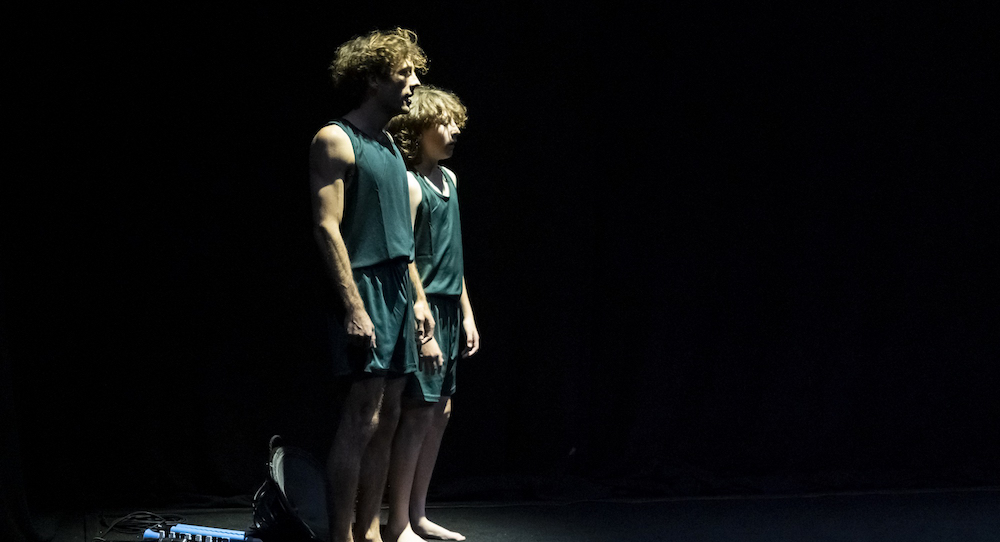Arts House, North Melbourne.
10 November 2022.
Sometimes, concept is king, and what we are watching is an idea playing out. Such is the case with Nevernevernevernevernevernevernever. (Yes, that’s seven nevers; although not all of them land.)
As a meditation on childhood and growing up, Never is catalysed by the fact that one of the performers is a 13-year-old boy, Sol Feldman. That he and his adult dance partner, Aaron Orzech, began to develop this work when the former was only eight adds further intrigue. It is one thing for grown-ups to muse on the inevitable nuances of childhood and adulthood – and for other adults to watch them do it – but for the child the true nature of the phase shift can only be guessed at. In light of this, Never promises the possibility of something richer than lost youth pining and ‘you can do it’ dreaming for precocious kids.
From the outset, the conceptual framing is apparent. The novelty of the boy/man duo is soon dissolved in the elusive and existential undertow, where adult selves conjured and child selves remembered swirl around in a dreamlike miasma of I. The diaphanous curtain that veils the action, the muted, half unheard words, the movement both mirrored and fractured…all of it like our own life experience, connected and separate.
However, once the supple twinings of concept have been revealed, Never seems content to remain. As dance it doesn’t catch fire. The physical language seems half formed. Either that, or Orzech and Feldman don’t really go for it. The punctuation is too loose, the forms unsurprising. Though true that technical virtuosity and athletic performance are not compulsory for a great dance work, there is a flatness here, and the original momentum slows, after which there emerges a curious sense of going through the motions, as though all the child need do is wait for nature to take its course and adult realisation will duly arrive.
The seven nevers could have taken bigger risks. They could have nudged us into discomfort, into a deeper self-questioning. Some of this limitation maybe due to Feldman’s youth and the prudence of the adults he worked with on this piece. Indeed, Never’s bravest choice was likely the determination to make it happen, because perhaps what we truly see with this work is the irreparable disjuncture of child and adult. Even the through lines have gaps; and it is across this space that Orzech and Feldman, and choreographer Jo Lloyd, do not quite reach.
Thus, for all its conceptual juice, the realised work is noticeably arid. As theatre it is too one paced, and as dance spectacle unremarkable. That said, there are moments of poignance and psychological subtlety, as well as a lyricism that chimes as bittersweet to an adult critic; but which might strike a 13-year-old as the thrill of potential.
Perhaps, in saying this, I have blundered onto the nub of the idea; namely, the uneasy relationship between potential and reality. If this is what the work’s creators were intending, well done them. If not, we are simply older, whatever that means.
By Paul Ransom of Dance Informa.

















